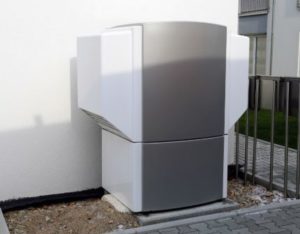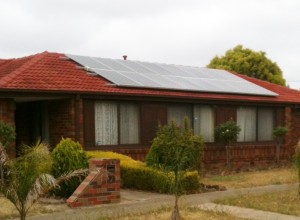Applications of Heat Pumps in Domestic Hot Water Systems
Guest Post by Michael Tobias
Heat pumps have a significant potential to reduce building emissions, which represent around 40% of global emissions.
Having a much lower operating cost than electric resistance heaters, heat pumps are a viable alternative to gas heaters. In addition, heat pumps can achieve synergy with solar photovoltaic systems.
In simple terms, heat pumps can be described as refrigerators or air conditioners operating in reverse.
While cooling systems remove heat from an enclosed space through the condensation and evaporation of a refrigerant, heat pumps reverse the process to deliver heat instead.
Based on the medium used for heat exchange, heat pumps can be classified into air-source and ground-source installations.
Since underground temperatures are more stable than outdoor air temperatures throughout the year, ground-source heat pumps offer a higher efficiency, particularly for colder climates.
However, air-source heat pumps have a much lower upfront cost thanks to their simpler installation.
Comparing the Efficiency of Water Heating Systems
The operating cost of a water heating system is determined by two main factors: the cost of the energy input, and how efficiently that input is delivered to the water as heat.
 Since heat pumps can harness thermal energy from outdoor air or from underground, their heating output exceeds their electricity input.
Since heat pumps can harness thermal energy from outdoor air or from underground, their heating output exceeds their electricity input.
A resistance heater must use one kilowatt-hour from the electric supply for every kWh of heat delivered to the water. However, most heat pumps can deliver between 2 and 4 kWh of heat for every kWh of electricity consumed.
The exact performance varies depending on the model and its operating conditions, but electricity savings above 50% can be expected in most cases.
When an electricity grid is dependent on fossil fuels, a heat pump simply replaces emissions at the point of use with power plant emissions.
However, there is a benefit nevertheless, since emissions are moved away from urban areas.
Also, if the power grid is gradually decarbonized, water heating systems that use heat pumps automatically become greener.
Note that heat pumps are also viable in space heating and air conditioning applications.
These units have a very different appearance from heat pump water heaters, but their underlying principle is the same.
These heat pumps can be an excellent home upgrade when the owner wishes to upgrade both air conditioning and space heating, since a single piece of equipment can replace two.
How Heat Pumps and Solar Power Systems Achieve Synergy
 The combination of heat pump water heaters and photo voltaic arrays results in some interesting possibilities.
The combination of heat pump water heaters and photo voltaic arrays results in some interesting possibilities.
While solar power systems have become much more affordable than a couple decades ago, they are still limited by a variable electricity output.
Unlike a diesel generator, a solar power system cannot deliver power when requested, only based on the availability of sunlight.
Residential solar power systems tend to have surplus production around noon, when most occupants are away in workplaces or educational institutions.
This surplus production is exported to the grid, but power companies only give partial credit in many cases.
On the other hand, if surplus electricity is stored for later use, homeowners save the full value of each kWh.
A heat pump water heater can act as an energy storage system. . . . Basically, each kilowatt-hour of solar generation can yield 3or more kWh of heat in a water tank.
The water tank can hold its temperature with adequate insulation, and homeowners can use hot water without activating the heat pump at the same time.
This configuration is especially useful for homeowners subject to time-of-use electricity rates, which have changing kWh prices throughout the day.
A heat pump water heater can store hot water using surplus solar generation, which is then used to offset consumption at hours where the kWh price is high.
Alternatively, the heat pump can heat water when the lowest kWh price are applied, saving the price difference with the highest kWh rate in the day.
In the case of Australia, both heat pumps and solar power system are eligible for cash rebates, in the form of Small-scale Technology Credits (STC).
This incentive program reduces the upfront cost of both technologies, providing yet another reason to deploy them together.
Michael Tobias, PE, LEED AP, CEM.
Michael Tobias is the founder and principal of New York Engineers, an Inc 5000 Fastest Growing Company in America.
He leads a team of 30+ mechanical, electrical, plumbing, and fire protection engineers from the company headquarters in New York City; and has led over 1,000 projects in New York, New Jersey, Pennsylvania, Connecticut, Florida, Maryland and California, as well as Singapore and Malaysia.